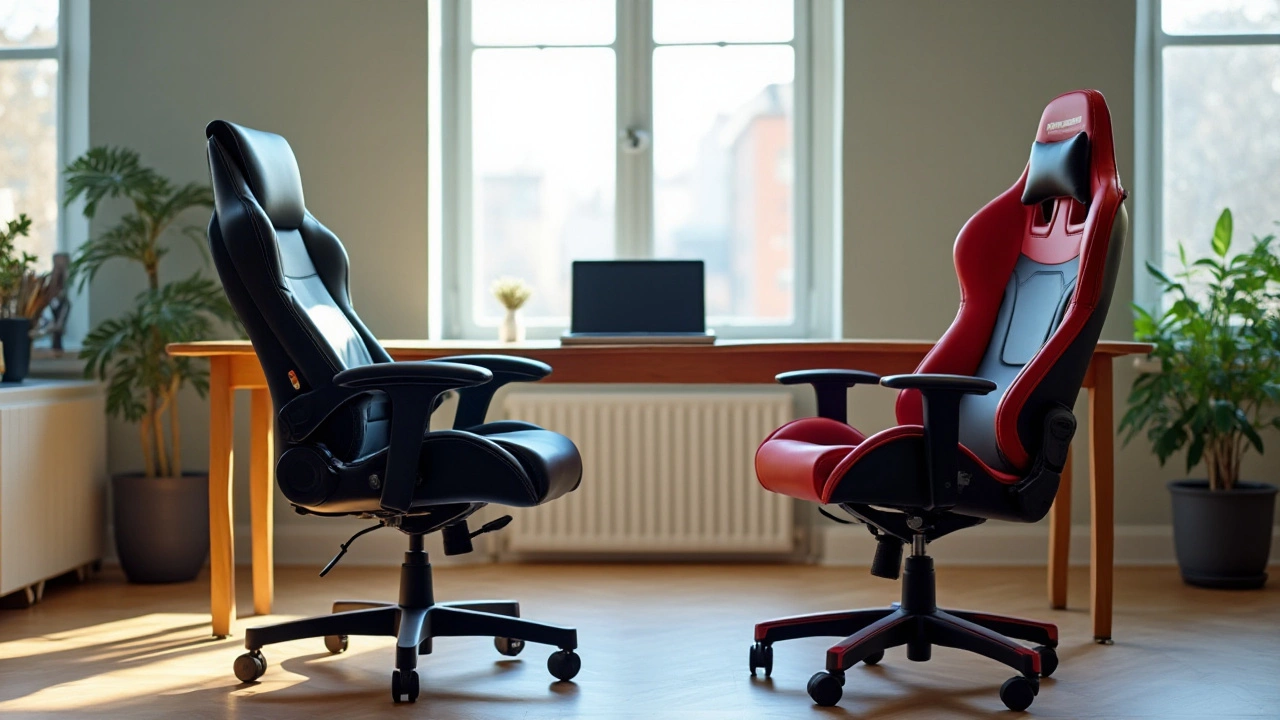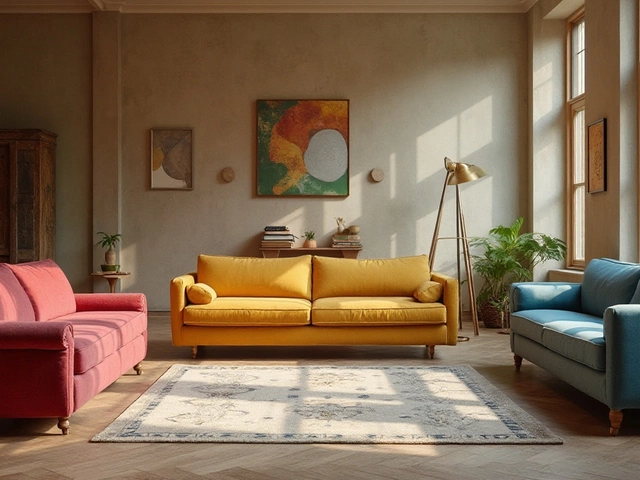When it comes to seating choices for prolonged sitting, many find themselves debating between a gaming chair and an office chair. Both have their unique perks, but which fits your lifestyle better? As more of us merge work and play into the same space, understanding the nuances between these two types is essential.
Gaming chairs have risen in popularity not just among gamers, but also among those who spend long hours at a desk. Known for their vibrant designs, these chairs often come equipped with features specifically for extended use, like advanced adjustability and comfort-enhancing perks. On the flip side, office chairs are traditionally crafted for functionality and subdued elegance, often suited to professional environments.
When selecting a chair, several factors come into play, such as ergonomic benefits, aesthetic appeal, build quality, and budget. We dive into these aspects to help you make an informed decision, ensuring that your next chair purchase is one that brings comfort and support to your everyday setup.
Design and Aesthetics
When it comes to gaming chair and office chair, their design philosophies couldn't be more different. Gaming chairs often embrace a visually striking design, inspired by the seats you'd find in a high-performance race car. This bold aesthetic isn't merely for show—it serves a purpose. Game streaming has turned into a spectacle enjoyed by millions online, so the dramatic flair of a gaming chair often complements the setup of an aspiring Twitch star. These chairs are designed with the intention of transporting the user into a world where endurance matters just as much as in-game performance. Interesting as it might be, these choices have shaped how a gaming chair looks today, pulling design ideas from competitive sports to blend excitement with comfort.
Office chairs, on the other hand, exude a different charm. Designed primarily for professional environments, they usually feature a minimalistic, utilitarian look. These chairs prioritize functionality over flair, focusing on simplicity and understated elegance. They're designed to blend seamlessly into corporate settings, maintaining a sleek silhouette that speaks to their role in productivity. A quote from Herman Miller, a giant in the office furniture world, reiterates this:
“In any space, the looks matter almost as much as the comfort. We've always believed the right chair can turn meetings into opportunities for creativity.”This perspective helps explain why such chairs, with their neutral palettes and traditional contours, are the go-to choice for many businesses aiming to project professionalism.
Beyond the initial appearance, materials play an essential role in defining a chair's aesthetic. Gaming chairs frequently employ materials like PU leather, chosen for both its durability and its resemblance to the luxurious feel of genuine leather. These materials withstand the rigors of extended use while maintaining a plush appearance. Another common feature is the colorful stitching and branding, which adds to the vibrancy while reinforcing the chair's lineage.
In comparison, office chairs often utilize a different material palette. Mesh backrests are common, portraying both a modern look and superior breathability for those sitting long hours. Fabrics in deeper hues are chosen for durability and stain resistance, whereas aluminum or steel base structures communicate strength and sturdiness. Often, the subtlety of these chairs is their selling point, creating an environment that encourages both concentration and comfort.
To boil it down, the choice between these chairs often hinges on personal lifestyle and professional needs. Those who crave an energetic touch to their environment may lean towards the dynamic and vibrant gaming chair, while those prioritizing contemporary elegance might find solace in a sophisticated office chair. Regardless of the decision, the evolution of both chairs' designs tells a fascinating story of functionality meeting style, where every curve and contour serves a meticulously planned purpose.
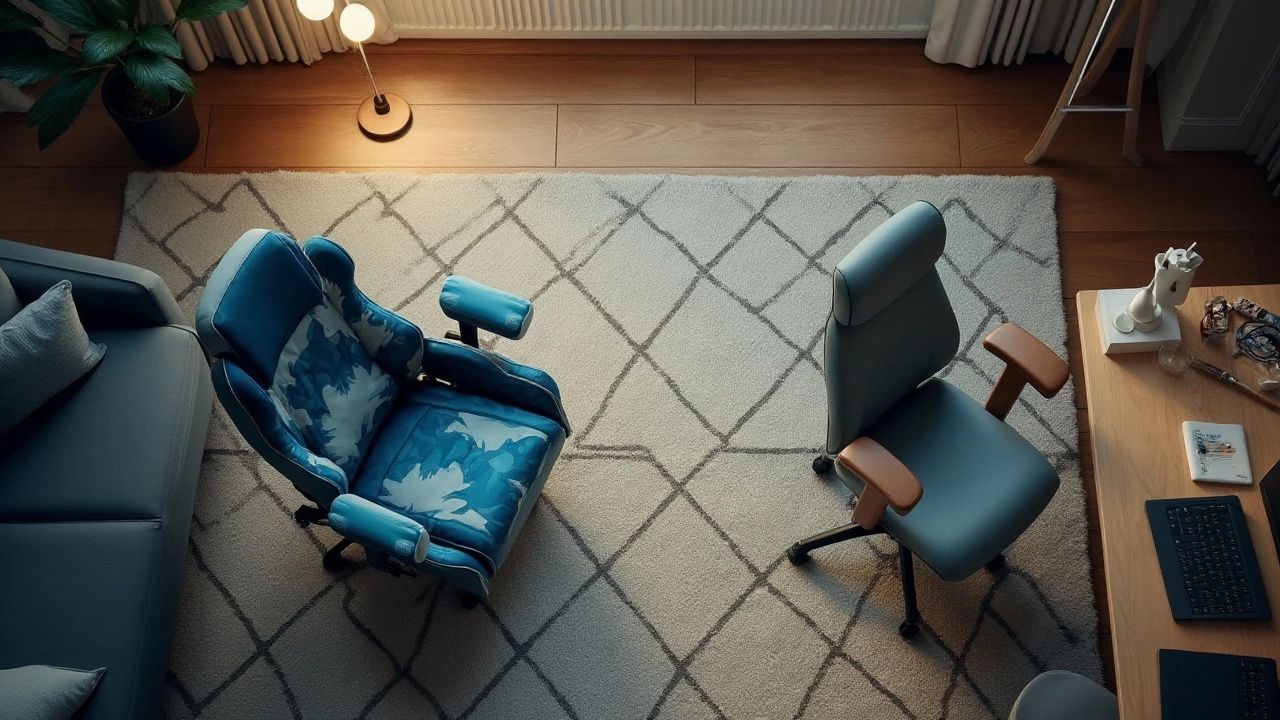
Ergonomic Features
When it comes to the ergonomic seating that both gaming chairs and office chairs offer, the stakes are not just about comfort but also health. These chairs are crafted considering long hours of sitting and aim to minimize the potential physical strain. Typically, gaming chairs boast high-back designs that provide full-body support, which is crucial when you are engrossed in intense gaming sessions or focused work. They cater to a user's comfort with adjustable headrests and lumbar cushions, which are designed to follow the curvature of your spine, ensuring proper posture and reducing the stress on your neck and shoulders.
A point where gaming chairs often shine is their adaptability. Many designs include multiple adjustment options — from armrests that move in three or even four directions to seats that tilt and recline significantly further than traditional office chairs. This versatility allows users to find the perfect seating arrangement tailored to their specific body type and desk setup. In contrast, office chairs usually prioritize simplicity and functionality over extensive adjustability, which can be fine for standard professional environments but might fall short if you need more personalized support.
To explore the impact of good ergonomic features on health, Dr. Jonathon Smith, an expert in occupational health, noted, "Sitting is an inherent part of most people’s daily routine, but the wrong chair can lead to long-term back and neck issues. A chair that adjusts to your needs can help in preventing these ailments."
His insights remind us that investing in a chair with superior ergonomic features is an investment in one’s wellbeing.
Examining recent trends, you might find ergonomically-designed gaming chairs made with memory foam cushioning or high-density sponge that not only offer superior comfort but durability. Additionally, these chairs often incorporate breathable materials such as mesh or polyurethane leather, which help in managing temperature and avoiding the discomfort of accumulated heat, a factor often overlooked in conventional office chairs. Understanding these distinctions is vital when deciding which seating option could ultimately enhance productivity and comfort for both gaming and work-related tasks.
Interestingly, reports suggest that people who use chairs with adjustable features and proper lumbar support have demonstrated a 20% improvement in productivity due to reduced discomfort. This illustrates the potential positive impact of choosing a chair that aligns with ergonomic principles, improving both health metrics and work efficiency in the long term.
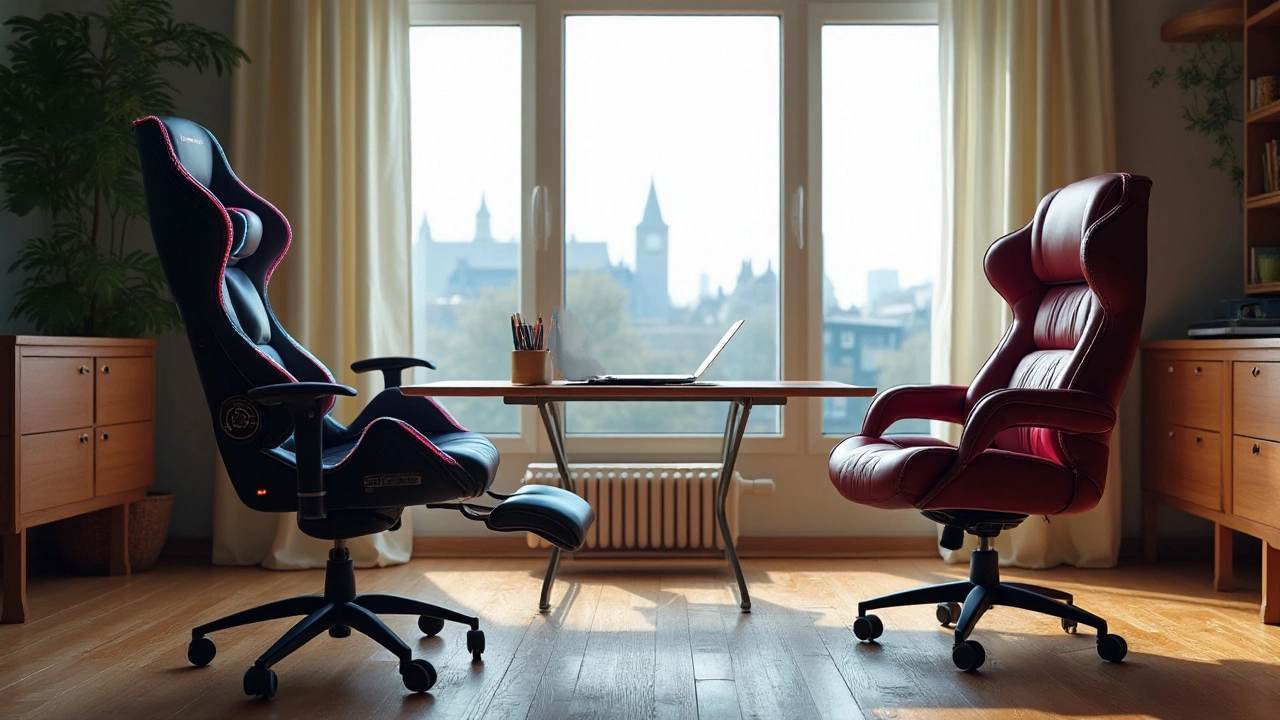
Durability and Materials
When considering either a gaming chair or an office chair, the materials they are made from play a huge role in determining their durability, lifespan, and comfort. Both types of chairs oftentimes utilize a variety of materials ranging from different kinds of leather to mesh fabrics, each serving its particular purpose. Gaming chairs frequently boast PU leather, a synthetic form that offers a sleek look coupled with robustness. It resists wear and tear fairly well, although it might not be the best choice in warmer climates without air conditioning.
On the flip side, office chairs are typically crafted from mesh or fabric, which can provide superior breathability, making longer sitting hours more bearable due to improved air circulation. In terms of frame construction, gaming chairs often employ steel or other metal frames to ensure they can withstand some exuberant use during intense gaming sessions. Such frames add to their weight but also promise greater sturdiness over time.
Comparing the two, it's crucial to look at the specific use-case scenarios. Office chairs designed for ergonomic support may utilize high-density foam padding and reinforced mesh, which not only enhance comfort but ensure the chair remains in optimal shape over extended use. Some gaming chair manufacturers assert their chairs can last through several years of use; however, constant shifting or leaning while gaming could affect wear.
"The choice of materials directly affects the longevity and comfort of a chair, making it an essential factor in deciding what to purchase," notes a spokesperson from the Ergonomics Society.
Adding another layer to this discussion is how each type of chair deals with maintenance and upkeep. PU leather, for example, allows for easy cleaning with a simple wipe down, though it might peel after a few years without proper care. In comparison, fabric-covered office chairs may require periodic vacuuming and deep cleaning to prevent staining, but they can remain visually appealing for longer. Ultimately, choosing between these two relies heavily on weighing the pros and cons of material choices against your personal lifestyle and environment.
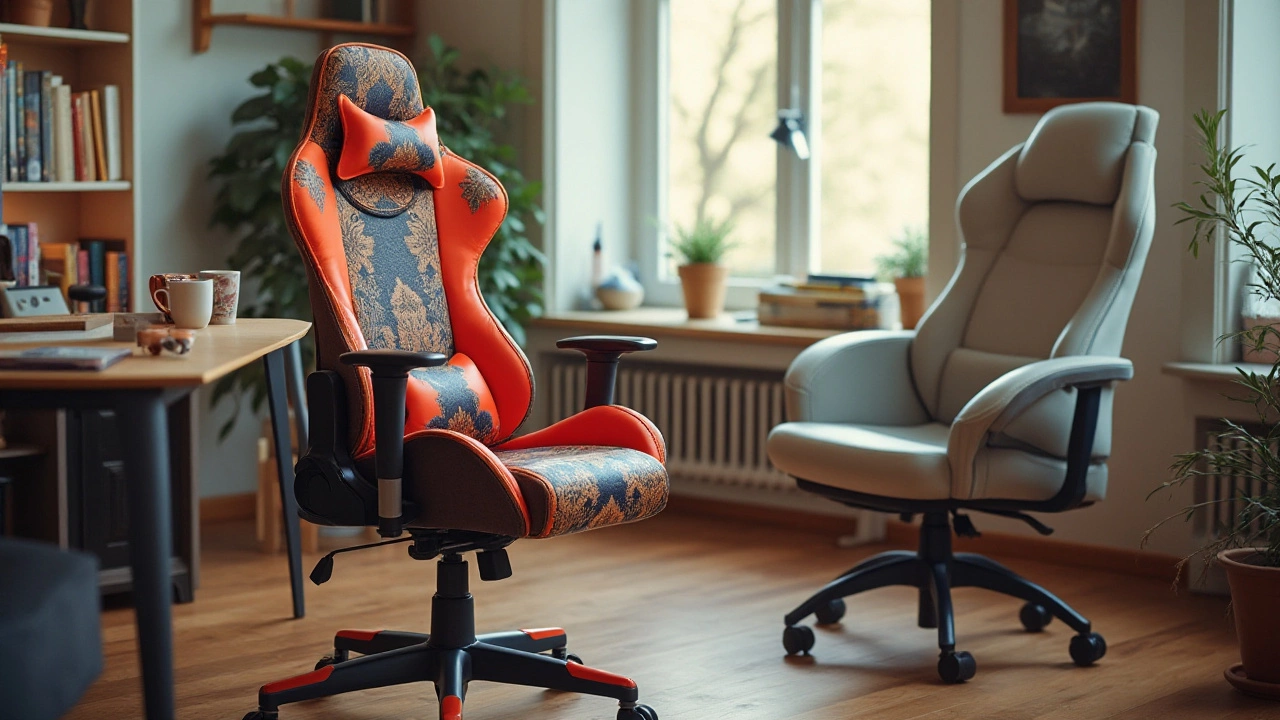
Cost vs. Value
In the market for seating options, the balance of cost versus value often dictates consumer choices, and selecting between a gaming chair and an office chair is no exception. Initially, the price tag can be a daunting aspect, especially when gaming chairs often start at higher price points due to their specialized features and branded designs. However, it's pivotal to delve deeper than just the initial cost and assess the long-term benefits that justify the expense.
Gaming chairs typically range from budget-friendly options around $100 to more premium models that can soar above $500. These price differences often correspond to the level of customization and comfort they offer, including adjustable headrests, lumbar support, and versatile armrests. The vibrant aesthetics, inspired by racing seats, add another layer of appeal but can also contribute to the price hike.
On the other hand, office chairs tend to present a broader price spectrum that can cater to diverse needs, from economical solutions below $100 to executive chairs nearing the thousand-dollar mark. These chairs emphasize ergonomic functionality, which is crucial for health aspects like spinal alignment and resilience against fatigue during long working hours. While they might seem less extravagant, investing in a quality office chair can reduce health-related absences and boost productivity, offering considerable value often overlooked at a glance.
"Affordable can end up being more expensive," rings true, especially when a chair wears out within a year due to subpar materials. An investment in a durable chair with a lengthy warranty period minimizes the frequency of replacements. According to a study by the American Journal of Public Health, ergonomic improvements in seating have been linked to increased work efficiency of up to 17%.
Ultimately, the cost-to-value equation boils down to individual requirements and how much significance one places on comfort, aesthetics, and longevity. Consider how much time will be spent in the chair, as the hourly cost for something used extensively daily might justify a higher outlay upfront. Whether for gaming marathons or office duties, a chair chosen wisely can bridge the gap between price and satisfaction.
